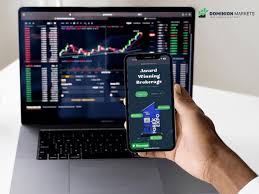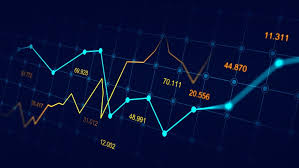
The Ultimate Guide to Choosing the Right Forex Trading Platform
In today’s fast-paced financial markets, choosing the right trading platform for forex tradingarea-ng.com Forex trading platform is crucial for both novice traders and experienced investors. With countless platforms available, each offering a unique set of features and tools, making an informed choice can significantly impact your trading success. This guide will provide valuable insights into what to look for in a Forex trading platform and how to navigate through the myriad of options available.
Understanding Forex Trading Platforms
A Forex trading platform is software that enables you to trade currency pairs in the foreign exchange market. It serves as the primary interface for executing trades, analyzing market trends, and managing accounts. Platforms can be web-based or downloaded software applications and come equipped with various tools designed to assist traders in optimizing their strategies.
Key Features to Look for in a Forex Trading Platform
1. User-Friendly Interface
The first impression of any trading platform is its user interface. A user-friendly platform should allow you to navigate easily between various features without feeling overwhelmed. Look for platforms that offer customizable layouts, which can cater to both new and seasoned traders.
2. Security and Regulation
One of the most crucial factors to consider is the security of your funds and personal information. Ensure the platform is regulated by reputable financial authorities, such as the FCA in the UK or ASIC in Australia. Additionally, look for features such as two-factor authentication and encryption protocols to protect your trading account.

3. Trading Tools and Features
Different platforms offer different trading tools and features. Look for platforms that provide advanced charting tools, technical indicators, and real-time market news. These tools are essential for making informed trading decisions and helping you execute your strategy effectively.
4. Execution Speed and Reliability
In Forex trading, execution speed can make a significant difference between profit and loss. Choose a platform known for its reliability and low latency. A platform with reliable servers can handle high traffic, especially during peak trading hours.
5. Range of Supported Assets
While you may be focused on trading Forex, consider the range of assets available on the platform. Many traders expand into commodities, cryptocurrencies, and indices. A platform that supports diverse asset classes allows you to diversify your portfolio easily.
6. Customer Support
Effective customer support is crucial when issues arise. Ensure the platform offers multiple support channels (live chat, email, phone) and is responsive to inquiries. A knowledgeable support team can save you time and stress when you encounter problems.
Types of Forex Trading Platforms
1. Proprietary Platforms
Many brokers develop their proprietary trading platforms. These platforms often cater to their specific audience, incorporating tools and features tailored to their users’ feedback. While they can provide a unique experience, consider the platform’s overall reputation and user reviews.

2. MetaTrader Platforms
The MetaTrader 4 (MT4) and MetaTrader 5 (MT5) platforms are among the most popular globally. They offer advanced charting options, automated trading features, and extensive support for custom indicators. These platforms are known for their reliability and user-friendly interfaces, making them suitable for traders of all levels.
3. Web-Based Platforms
Web-based platforms enable you to trade from anywhere with an internet connection. This flexibility is ideal for traders who prefer not to download software. However, it’s essential to ensure that web platforms maintain the same level of functionality and security as their desktop counterparts.
4. Mobile Trading Apps
In today’s mobile world, having a reliable trading app allows you to manage your trades on the go. Look for platforms that offer well-designed mobile applications with features similar to their desktop versions, ensuring you have access to essential tools whenever you need them.
Cost of Trading Platforms
Costs can vary significantly between different trading platforms. While some platforms offer free trading, others may charge commissions, spreads, or account maintenance fees. Analyze the full cost structure of any platform you consider to ensure you’re making a cost-effective choice.
Conclusion: Making the Right Choice
The Forex market presents tremendous opportunities for traders; however, the platform you choose can significantly influence your trading experience. By prioritizing factors such as usability, security, available tools, and support, you can find a Forex trading platform that meets your specific needs. Take the time to compare different platforms and, if possible, try out demo accounts before committing real funds. This hands-on experience can provide further clarity in making your decision.
Ultimately, your trading success depends not just on the platform you choose but also on your trading strategy, risk management, and market understanding. With the right resources and tools provided by the right platform, you can navigate the Forex market more confidently and effectively.
